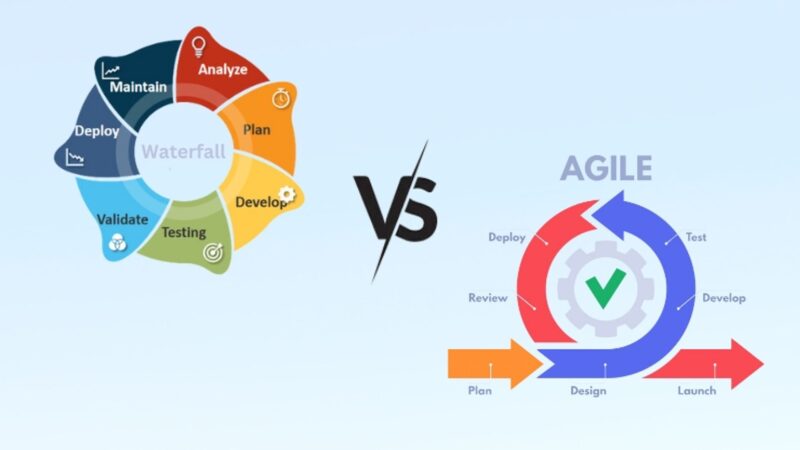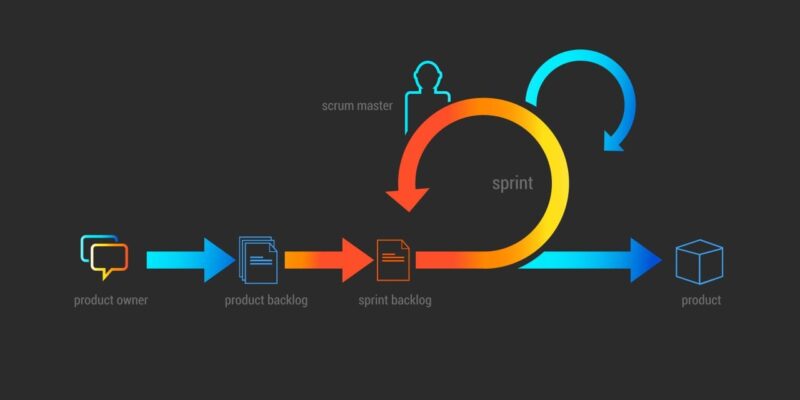The modern business workflow is a complex system of tasks and duties. Employees and departments are engaged in different projects. Sometimes, it’s quite troublesome to manage them. Thus, uniform standards for setting tasks, allocating time, and using tools are created to avoid building the management of each project from scratch. For this reason, methodologies for project development and management have been developed.
Agile comes as the most popular and effective representative of such methodologies in the modern business landscape. In the article, we’re going to discuss its essence, answer the question “What are the advantages of Agile methodology?”, and highlight the key features of the methodology.
To begin with, let’s clarify what Agile is. The methodology is a flexible approach to project management. It allows for simplifying and streamlining business workflows, which comes as a key benefit for firms. Business holders spend less time on project development and can use pre-made layouts for management and control.
Benefits of Agile

Let’s focus on the strong aspects of the methodology and answer the question “What are some of the benefits of the agile development methodology?”. So, the approach has gained incredible popularity in the business landscape because of its:
- Increased flexibility and adaptability ─ Flexibility is the main feature of such software. When working within Agile methodology, project tasks are not strictly set before work teams. Instead, they can be adjusted, which allows for adapting to changing circumstances swiftly. It means that teams can react to customers’ changing demands effectively and promptly, improving performance productivity.
- Faster time-to-market ─ This feature implies that products developed within Agile projects reach the market faster. Although this tendency is not obligatory, general research proves this point. Since tasks are separated within work teams, each member can concentrate on different aspects, meaning that teams cope with duties faster.
- Improved quality ─ The methodology uses an interactive approach, meaning that improvements are made to processes each time when they are repeated. Constant improvements and focus on quality control allow for achieving the best result and products of the highest quality.
- Increased customer satisfaction ─ Interaction with clients is one of the benefits of the Agile methodology. By attracting the target audience to the process of product production, teams demonstrate devotion to customers. Thus, companies show that they value consumers’ opinions, which leads to their engagement and loyalty.
- Better team collaboration ─ Constant meetings, conferences, and team discussions lead to enhanced collaboration between work units. All members stay aware of the current state of affairs and contribute to the common result.
- Reduced risk ─ Regular sprints allow for assessing the success at different stages of project implementation. This strategy helps detect weaknesses promptly and eliminate them effectively, which contributes to a high success of the whole project.
- Enhanced project visibility ─ Unlike traditional methodologies, Agile makes projects visible at all stages. This transparency shows an open character and improves loyalty since every interested user can clearly observe project movements.
If you need assistance in Agile development and integration, make sure to find a custom software development company that provides you with a modern solution for your cases. Skilled specialists assist in integration and learn how to use the software.
Benefits of Agile Compared to Other Methodologies

Now, that you realize the main advantages of the agile methodology, let’s make a brief comparison with other methodologies existing in the family:
Agile vs. Waterfall
Waterfall used to be the most powerful methodology before the emergence of Agile. The first is characterized by a structured linear process. In this case, it’s possible to proceed to the next task only after the completion of the first one. This methodology is perfect for long-term projects but it’s not the best choice for quickly evolving domains.
Agile vs. Lean
Lean is another competitive of Agile. It uses a streamlined approach and is aimed at eliminating unnecessary waste. Both methods have similarities since they focus on customer satisfaction and fast time-to-market. Lean is less flexible and aimed at cultural thinking within a company. The approach is less material, which poses certain difficulties in its implementation.
Agile vs. PRINCE2
PRINCE2 is an excellent solution for product-based planning. According to its concept, a structured board group is created for high activity, while project managers are engaged in routine daily tasks. However, this methodology uses a predictive plan-based approach, but it lacks the emphasis on delivery.
Challenges of Implementing Agile

Finally, let’s discuss what challenges managers can face when implementing Agile methodology and provide effective ways to overcome them:
- Lack of predictability ─ Although the method features high flexibility, it has a drawback since interested parties do not have clear deadlines and terms. To cope with this challenge, it’s recommended to set approximate milestones.
- Over-reliance on team collaboration ─ Projects highly rely on engaged employees. An individual burnout can lead to lagging in project development. Thus, it’s important to balance collaboration and teamwork with individual accountability.
- Lack of clear documentation ─ Agile focuses on software and project development. Neglect of documentation leads to problems with maintenance and code improvement during future use.
- Technical debt ─ Focus on quick software development can lead to gaps in technical aspects. Technical debt is a scope of tasks to be done to improve the quality of the future product and code.
- Scope creep ─ Adaptability leads to expanding an initial scope of work. Since new tasks are added, this results in bigger expenses and time requirements.
Summarizing the answer to the question “What are the benefits of Agile?”, it’s worth saying that the methodology is the most popular solution in the modern business industry. It offers professional tools for successful project implementation and development.
Related Posts:
- Quantum Computing ─ Could It Revolutionize Online…
- How Jewelry Plays a Role in Holistic Wellness…
- Unlocking Efficiency ─ The Benefits of Integrating…
- Best Practices for Securing Your PC and Avoiding Malware
- 10 Data Center Migration Best Practices: Ensuring a…
- 6 Best Practices for Data Center Disaster Recovery








